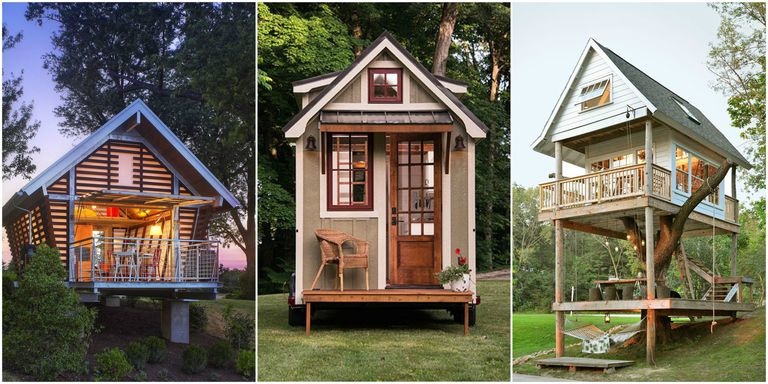
Tiny Homes Are Catching on in a Big Way


In the 1980s and 90s, just as the McMansion was gobbling up resources and acres of land all across America, a small group of dedicated enthusiasts quietly began extolling the benefits of living small. Tiny, Tiny Houses, Or How to Get Away from It All by Lester Walker was one of the first widely read manifestoes on tiny homes. Taking as his inspiration Thoreau’s cabin in the woods, Walker insisted that living only with what one needs was a way to be more connected to the world and to oneself. He views this movement as inherently American, even if the rest of the country was ogling at celebrity mansions on MTV’s Cribs.
It would take a while for the rest of us to catch on.
It wasn’t until 2009, in the throes of economic crisis, that the tiny house movement began to see some traction, appealing especially to millennials who saw the excess of earlier decades as wasteful, harmful to the environment, and spiritually lacking. Since then, advocates have pushed for changes to zoning laws and housing policies to accommodate tiny homes. Now, there are tiny homes being built all across the country, in addition to tiny (“micro”) apartments in major cities, and they are appealing to generations young and old. According to AARP, the tiny house movement has especially captivated the 50 and over crowd, who want to downsize and not have to deal with the maintenance that comes with owning a big home.
Just how tiny are tiny homes? Where the average American home is around 2,600 square feet, a tiny home is between 100 and 400 square feet, which is smaller than most New York City apartments. Ideally, a tiny home is entirely self-sufficient, meaning it can generate its own electricity and water, and you wouldn’t have to pay utilities. And this isn’t the only financial benefit of living small. Many tiny homeowners do not need to take out a mortgage or loans, even if they build their home from scratch. While the average home costs over $200,000, the average tiny home costs upwards of $23,000. Living in a tiny home also forces you to take stock of what’s important, as you’ll need to determine how much “stuff” you really need to survive.
Of course, living small does not come without its challenges, and it may be downright impossible for families with multiple children. Having guests over may also be trying, not least because you probably will not have space for an extra bed and a tiny kitchen means less space for cooking and serving up a dinner party. The biggest issue, though, is that, while zoning laws have changed significantly to accommodate tiny homes, there are still gray areas that make living in one somewhat uncertain, and all too often tiny homeowners find out about zoning restrictions only when it’s too late—just in time to realize that tiny homes can also be a challenge to sell.
Though as our conception of what having a “home” means (and as tiny home shows continue to crop up on HGTV) it is likely that zoning laws will only continue to evolve in favor of living small. Whether or not a tiny home is in your future, there is plenty to take as inspiration. More and more people are determining that living a fulfilling life need not take up so much space.


